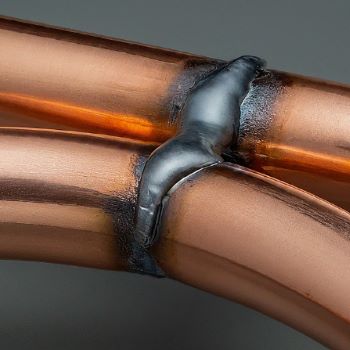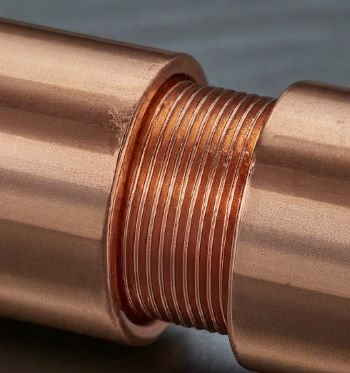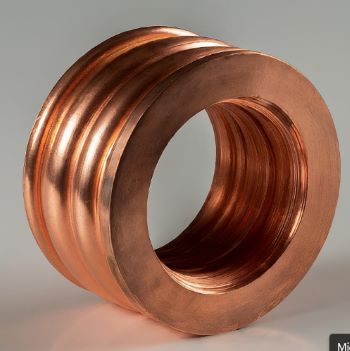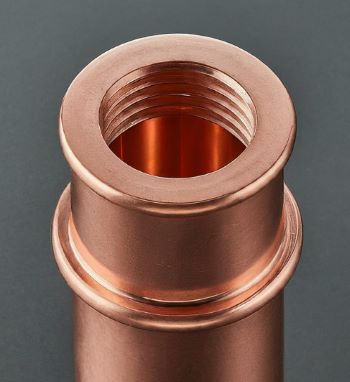The lifeline of any plumbing system is its connections. Secure and reliable joints are paramount to ensure proper water flow and prevent leaks that can cause damage and headaches. This is where copper couplings emerge as the unsung heroes. They provide a trusted and versatile way to join copper pipes.
But with different types of copper couplings available, navigating their world can be a puzzle. Fear not, DIY warriors and plumbing enthusiasts! This blog equips you with all the knowledge you need to maximize performance with copper couplings.
Copper Couplings: Benefits and Applications
Copper couplings are vital in plumbing. They securely join two copper pipes to make a continuous path for water. These robust connectors offer a multitude of benefits:
➡️ Leak-proof connections: When installed correctly, copper couplings form a watertight seal, minimizing the risk of leaks and potential water damage.
➡️ High durability: Copper is a champion of strength and corrosion resistance. Copper couplings ensure long-lasting performance for your plumbing system.
➡️ Easy installation: Compared to other joining methods, copper couplings offer a relatively simple installation process, making them DIY-friendly.
➡️ Heat resistance: Copper boasts excellent heat resistance, allowing it to withstand high water temperatures commonly found in plumbing applications.
➡️ Aesthetics: The polished appearance of copper couplings adds a touch of elegance to exposed plumbing, enhancing the overall look of your system.
The applications of copper couplings in plumbing systems are as diverse as the systems themselves. Here are some common uses:
➡️ Connecting straight pipe runs: This is the most basic application, creating a continuous flow path between copper pipes.
➡️ Changing pipe directions (with elbows): Copper couplings are essential for incorporating elbows into the system, allowing changes in direction for proper water flow.
➡️ Reducing pipe sizes (with reducers): When transitioning between different pipe sizes, copper couplings with reducers ensure a smooth and secure connection.
➡️ Repairing damaged pipe sections: For damaged pipe sections, copper couplings facilitate the removal of the damaged part and the secure attachment of a replacement pipe section.
Types of Copper Connectors and Their Uses
Not all copper couplings are created equal. Here’s a breakdown of the most common types and their ideal applications:
➡️ Soldered Couplings:
These traditional workhorses require soldering for a permanent and secure connection. Solder is applied to create a watertight bond between the coupling and the pipe.
➡️ Compression Couplings:
Offering a faster and easier installation compared to soldering, compression couplings utilize a compression nut and ferrule. Tightening the nut creates a secure connection.
➡️ Crimp Couplings:
Ideal for tight spaces, crimp couplings require a specialized crimping tool. The tool creates a secure crimp on the coupling ring, forming a watertight seal.
➡️ Sweat Couplings (Sharkbite):
These innovative couplings feature a push-fit design, allowing for tool-free installation. Simply insert the pipe into the coupling until it clicks for a secure connection. While convenient, they are generally recommended for non-critical applications due to their non-soldered nature.
Choosing the Right Copper Connectors for Your Project
Selecting the perfect copper coupling hinges on various factors:
➡️ Project Requirements: Consider whether you need a permanent (soldered) or temporary (compression) connection. Pressure rating requirements and space constraints also play a role.
➡️ Plumbing Code Compliance: Ensure the chosen coupling type complies with local plumbing codes and regulations in your area. Always prioritize safety and adherence to building codes.
➡️ Installer Skills: Evaluate your comfort level with soldering or using specialized tools required for certain coupling types. Choose an option that aligns with your skillset for a successful project.
Installation Tips for Flawless Copper Coupling Connections
Installing copper couplings can be a breeze with the right knowledge. Here’s an overview of the process for common coupling types. It always emphasizes safety.
Preparing the Pipes (Cutting, cleaning, deburring):
1. Use a pipe cutter to create a clean and square cut on the copper pipe ends.
2. Clean the pipe ends with sandpaper or a wire brush to remove any debris or oxidation.
3. Use a deburring tool to remove any sharp edges from the cut pipe ends, ensuring a smooth insertion into the coupling.
Soldered Couplings:
1. Apply soldering flux to the cleaned pipe ends and the inside of the coupling. Flux helps the solder flow and create a strong bond.
2. Heat the coupling and pipe ends with a torch until the flux boils.
3. Apply solder to the heated joint, allowing it to melt and flow into the connection.
4. Let the solder cool completely before disturbing the connection.
Compression Couplings:
1. Slide the ferrule and then the coupling onto the prepared pipe end.
2. Insert the other pipe end into the opposite side of the coupling.
3. Tighten the compression nut with a wrench. Use the proper torque from the manufacturer’s instructions. The pipe or ferrule may get damaged if you overtighten.
Crimp Couplings:
1. Insert the pipes into the coupling from both sides.
2. Use a calibrated crimping tool specifically designed for the chosen crimp coupling type.
3. Crimp the coupling ring as the manufacturer directs. This will make sure you get a secure and watertight connection.
Sweat Couplings (Sharkbite):
1. Ensure the pipe ends are clean and free of debris.
2. Push the pipe end firmly into the coupling. Stop when you hear a click. This sound means the fit is secure.
General Tips:
1. Always follow the specific manufacturer’s instructions for the chosen copper coupling type. These instructions will provide detailed steps and recommendations for optimal installation.
2. Use gloves and safety glasses. Use them when cutting pipes, soldering, or using crimping tools.
3. When using soldered or compression couplings, ensure the water supply is turned off. This prevents unexpected water surges.
Maintenance and Troubleshooting Tips
Regular maintenance is key to ensuring the longevity and performance of your copper couplings. Here are some tips:
➡️ Inspect the couplings and pipes often. Look for leaks, rust, and loose connections.
➡️ For compression couplings, if leaks occur due to loose connections, tighten the compression nut. Use the right torque.
➡️ For soldered couplings, if leaks persist or the connection looks bad, you might need to replace the whole coupling. Consult a qualified plumber for assistance with repairs.
Conclusion
Copper couplings are the reliable workhorses of plumbing connections. Understanding their benefits, uses, and the available types will prepare you. You can then choose the right coupling for your project.
Proper installation and maintenance are key. They ensure your copper couplings work well. They also ensure a long-lasting, leak-free plumbing system.
Post time: Apr-25-2024





